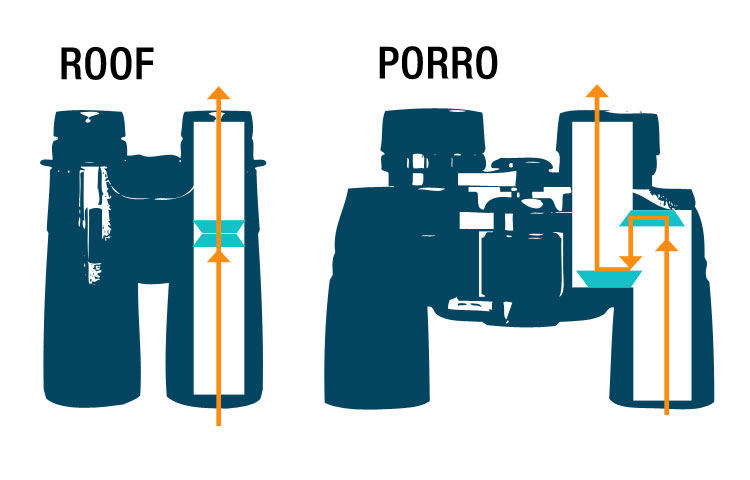
The two types of binoculars available in market today come in 2 general designs: Porro Prism Binoculars and Roof Prism Binoculars. They both use image-erecting prisms so you can see images in the correct orientation.
See the comparison of the two here:

| Prism | ||
| General Information |
|
|
| Design |
|
|
| Advantages |
|
|
| Disadvantages |
|












